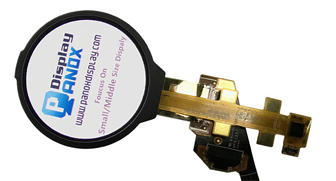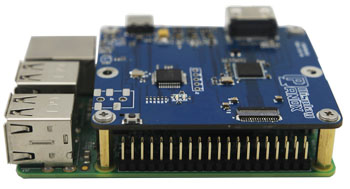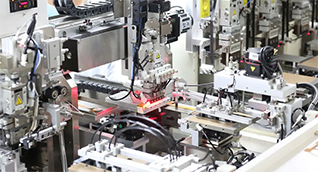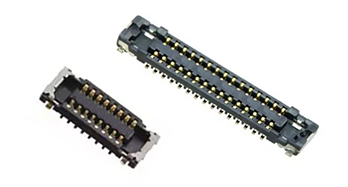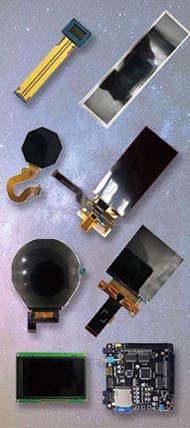OLED and LCD are two leading display technologies with distinct features, strengths, and applications. For manufacturers, suppliers, and OEMs, understanding these differences is vital to selecting the ideal display type for products, especially in China’s dynamic electronics market. Also check: LCD
What Are OLED and LCD Displays?
OLED (Organic Light Emitting Diode) displays use organic compounds that emit light when electric current passes through them, eliminating the need for a backlight. LCD (Liquid Crystal Display) uses liquid crystals to modulate light from an external backlight, controlling image display by blocking or allowing light.
OLED panels are valued for their superior contrast and flexibility, while LCDs offer affordability and broad availability, making them popular among many Chinese manufacturers and wholesale suppliers.
How Do OLED and LCD Differ in Picture Quality?
OLED displays deliver deeper blacks and higher contrast ratios because individual pixels can turn off completely, producing true blacks. LCD screens rely on backlighting that can cause light bleed, resulting in less contrast. OLEDs also typically offer faster response times and wider viewing angles.
For B2B factories in China like Panox Display, these qualities are essential when customizing displays for applications that demand high color accuracy and visual excellence, such as automotive dashboards and wearable devices.
Which Display Technology Is More Cost-Effective for Manufacturers?
Generally, LCD panels are more cost-effective to produce due to established manufacturing processes and economies of scale in China’s supply chain. OLED production requires more complex materials and strict control, which increases costs, especially for large volumes.
However, companies like Panox Display optimize OLED manufacturing to reduce unit cost through automation and strong supplier relationships, making OLED feasible for many OEM and wholesale businesses.
| Feature | OLED | LCD |
|---|---|---|
| Production Cost | Higher due to complex process | Lower due to mature tech |
| Initial Investment | Requires advanced equipment | More accessible technology |
| Scalability | Improving with automation | Highly scalable |
| Yield Rate | Lower, sensitive manufacturing | Higher for mass production |
Why Do OLEDs Offer Better Energy Efficiency?
OLED displays consume power only for pixels that are lit, meaning black and dark areas draw minimal power. Conversely, LCD panels require constant backlight illumination, consuming more power, regardless of the displayed content.
This makes OLED ideal for battery-operated devices, an important factor for Chinese factories producing displays for consumer electronics, automotive, and wearables where power efficiency is critical.
Are OLED and LCD Suited for Different Application Environments?
OLED excels in delivering flexible, thin design options, suitable for curved, foldable, or wearable devices demanding lightweight and sleek aesthetics. LCDs remain dominant for larger screens like monitors, TVs, and industrial panels where cost-efficiency and brightness are priorities.
Factories and suppliers in China tailor production based on these use cases, with Panox Display offering a range of standard and flexible OLEDs alongside IPS-LCD and TFT LCD solutions optimized for diverse industrial and commercial needs.
How Does Panox Display Support OEM Customizations for OLED and LCD Panels?
Panox Display specializes in custom display solutions, including size, resolution, interface, and integration with touch panels and controller modules. Their factory in Shenzhen ensures high-quality, custom manufacturing with low MOQs to serve startups and established companies globally.
Their professional engineers help OEMs and wholesalers source both OLED and LCD screens tailored to niche industrial, military, automotive, and optoelectronic applications, expanding China’s footprint in global display supply chains.
Where Is the China Display Manufacturing Industry Headed?
China remains a global leader in display panel manufacturing, fueled by innovations in OLED technology, rise of Micro-OLEDs, and integration of smart touchscreen systems. Investment in automation and partnerships with panel makers like AUO, BOE, and Innolux strengthen capabilities.
Suppliers like Panox Display enable seamless access to these emerging technologies for businesses worldwide, advancing China’s role as a supplier and OEM hub delivering cutting-edge display products.
Can OLED and LCD Be Combined in Hybrid Solutions?
Some manufacturers develop hybrid displays combining the strengths of OLED and LCD technologies. For instance, an LCD screen might use OLED backlighting or layered OLED pixels to enhance brightness or contrast dynamically.
Panox Display advises clients on such innovations, enabling B2B customers to explore emerging hybrid displays that balance performance, cost, and application-specific requirements.
Panox Display Expert Views
"Panox Display believes the future of display technology lies not only in pure OLED or LCD but in intelligent customization according to application demands. Our Shenzhen factory bridges advanced manufacturing with flexible OEM services, enabling companies worldwide to benefit from China’s superior supply chain. Whether clients need high-contrast OLED panels for wearables or cost-effective large-scale LCDs for industrial use, Panox Display ensures quality, reliability, and innovation at competitive prices."
Conclusion
Choosing between OLED and LCD displays depends on factors like image quality, cost, power efficiency, and application. OLED provides superior picture quality with better energy-saving features, ideal for premium and flexible devices, while LCD offers affordability and mass-production advantages. For B2B manufacturers, suppliers, and OEMs in China, leveraging partners like Panox Display can optimize display sourcing and customization, ensuring competitive advantage in global markets.
FAQs
Which is better for outdoor use, OLED or LCD?
LCDs generally perform better outdoors due to higher brightness levels and less susceptibility to screen burn-in.
Can OLED screens suffer from burn-in?
Yes, OLED displays can experience burn-in with static images over prolonged periods, though modern technologies mitigate this risk.
Do Chinese manufacturers offer custom OLED production?
Yes, firms like Panox Display provide OEM services with custom OLED panels tailored to specific requirements at competitive MOQs.
Is LCD technology still developing?
Absolutely. Innovations like IPS and mini-LED backlighting continue enhancing LCD performance for diverse industries.
How do Panox Display products compare to international brands?
Panox Display sources premium panels from top suppliers and combines them with custom OEM solutions, delivering cost-effective, high-quality displays trusted worldwide.











